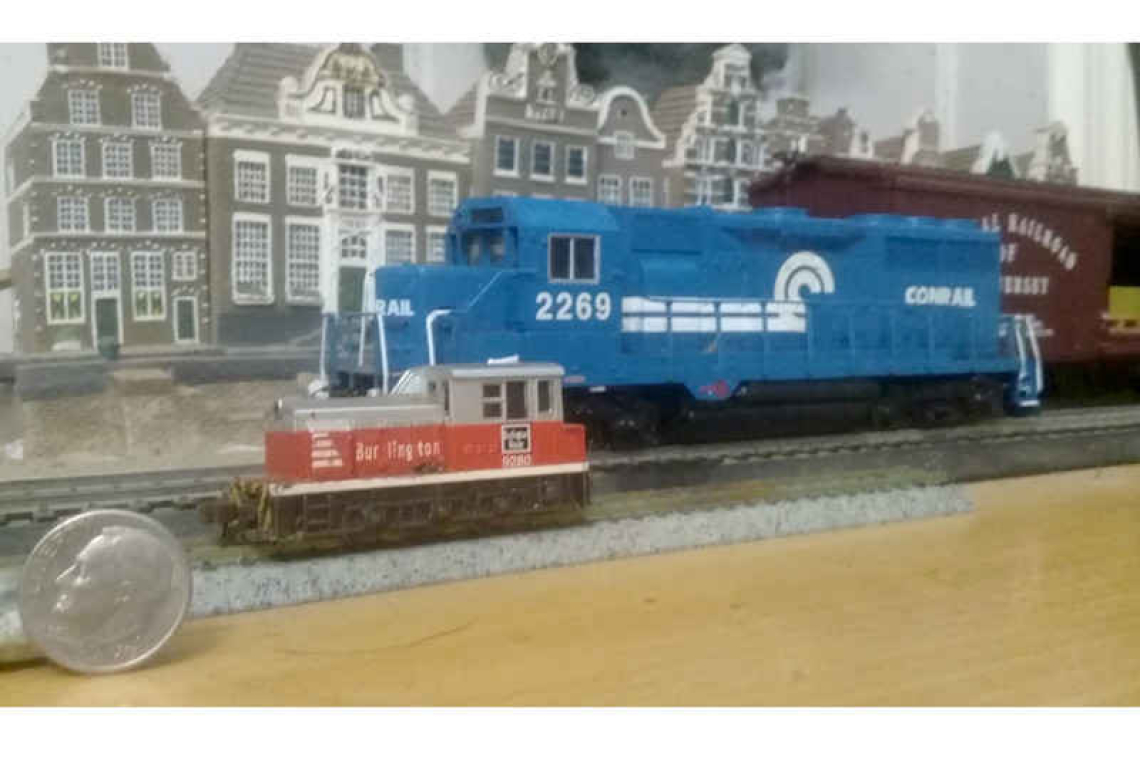By Roger (age 11)
Imagine an 11-year-old boy. He carries a briefcase into the classroom and sits down at his desk and listens to the teacher. Then at playtime, the briefcase is carefully pulled up on the desk and opened. In it is a working model train set.
Having a train set that can fit inside a briefcase is cool for a while, but not so fun as the big trains!
Model trains come in about five sizes. The most popular is HO, at a scale of 1:87 (if you don’t know what that means, go ask your math teacher). Another scale is called Z – it is very small. Its scale is 1:220 – so small it fits in a briefcase. The size between Z and HO is the N scale, at 1:160; and the O scale at 1:48.
I prefer O scale. A scale of 1:48 means that ¼-inch equals about 1-foot long.
Last is G! It is the biggest one at 1:25 and is more fun! Most G scale sets are so big they are used outside in the garden – so not so good on rainy days.
A real GP (General Purpose) -35 engine is 56 feet long. A Z scale engine is just 3 inches long. In HO, it will be 7 inches; but in O, it is 1 foot 2 inches. The G scale model will be 2 feet 5 inches.
Real Trains
Now real trains come in different gauge sizes, too. In the US, the tracks’ standard width is 4 feet 8.5 inches, which seems like a random size. Who came up with that? I was wondering. Well, it seems it was the Romans. I am not kidding.
War chariots were made with the wheels just far enough apart to accommodate the two horses that pulled the war vehicles. Through lots of use, ruts appeared in the dirt roads where the wheels ran over and over again. Those ruts were of course, 4 feet 8.5 inches wide.
When the war was over, everyone became accustomed to the 4-foot 8.5-inch ruts and so all regular wagons were made to fit the wheel ruts. Old habits are hard to change, because by the time the British engineers came across the Atlantic to help design and build the early railroad in the US, they brought the 4-foot 8.5-inch dimension with them.
Ironically, precision in big trains does not seem to be as important as in the models. In the US, railroads’ standard gauge can vary from 4 feet 8 inches to 4 feet 9½ inches. (I wish math teachers would let our answers be off a bit like that.)
Anyway, O gauge is the size I prefer. It is not too big and not too small. The track can be put on a piece of wood and slid under your bed when play time is over.
Now to real trains where the tracks are two-horse-bottoms’ wide. This is indeed VERY funny! And it did come from the Roman chariots! How cool is that?







